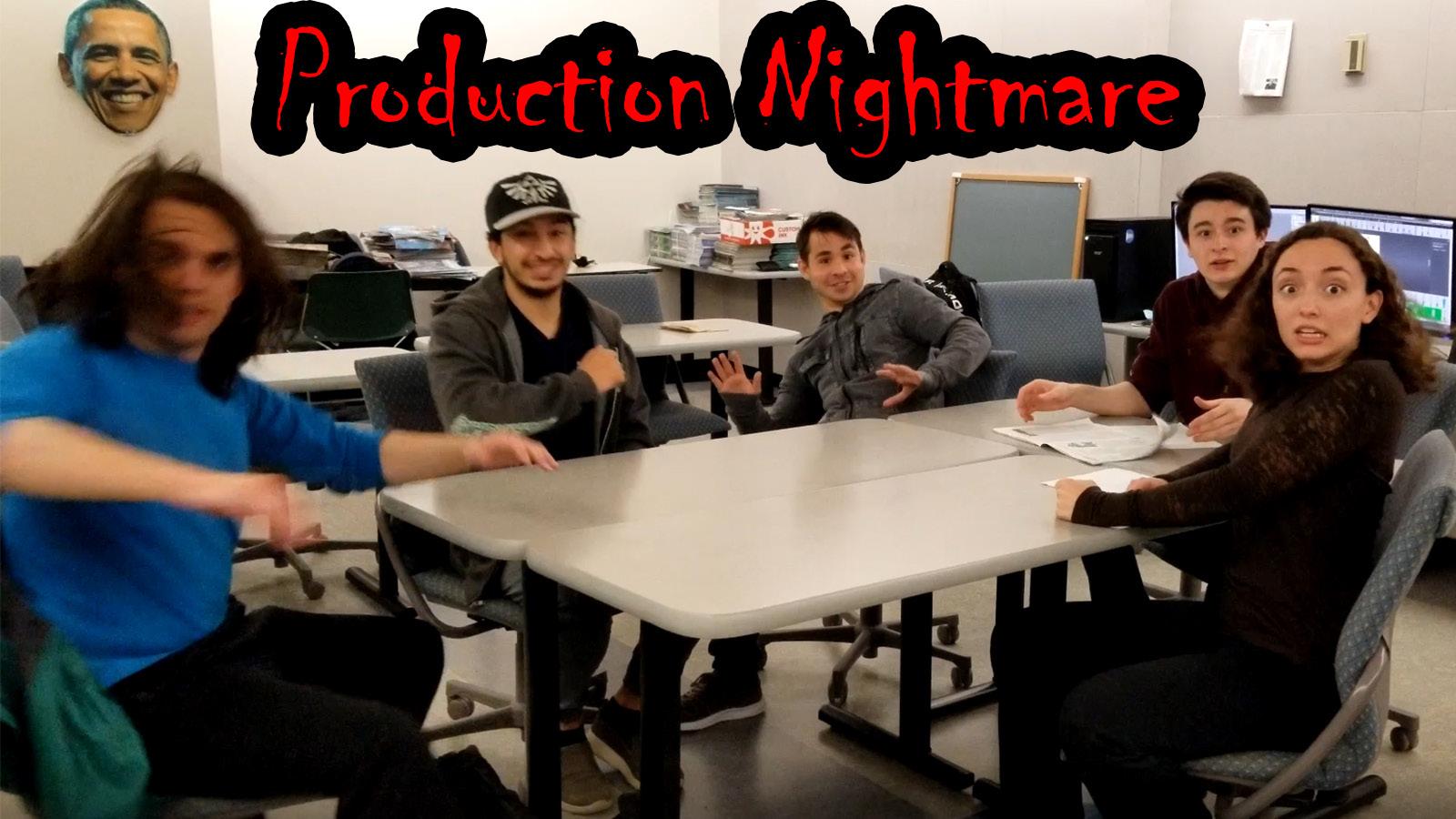
9 minute read
Russian Through Some Foreign Aggression
Russian Through Some Foreign By Julius Apostata Aggression
Привет, товарищ! Greetings, comrade! Welcome to the most free and open country in the world… RUSSIA! Here, we obey glorious Russian leader Vladimir Putin while aggressively—I mean righteously, of course!—reclaiming land that is owned by other countries. Да, maybe those from the West can claim that what we are doing is extremely aggressive foreign expansion, but trust us, this is legit! After all, that weakling—I mean, totally not a convenient target—Ukraine had it coming! That is why the glorious leader had decided to potentially escalate the current conflict in Eastern Ukraine by amassing troops near the border—I mean, running totally legit military exercises. What’s that, comrade? We aren’t in Mother Russia? Perfect, now I can drop this Russian accent! More importantly though, I can freely tell you about what is going on in Eastern Ukraine. According to both Russian Defense Minister, Sergei Shoigu, and intelligence reports from Ukraine, there has been a massive buildup of 80,000 personnel along both the Eastern Ukrainian border, as well as in the recently annexed Crimean territory. Additionally, according to Al Jazeera, Russia has also begun to restrict foreign vessels from navigating around parts of the Black Sea, in direct violation of typical maritime norms. So, what exactly is happening between Russia and Ukraine, and how will this impact relations between Russia and the west?
Advertisement
To get into the details of the current situation going on in Ukraine, it’s important to keep in mind the broader foreign policy to which Russia operates. Following the dissolution of the Soviet Union in 1991, the newly created Russian Federation proved to be far weaker than when it had been under communism: few accesses to warm-water ports, the loss of much of its population in various breakaway states from the USSR (such as Ukraine and Georgia), and NATO on its doorstep. This, in conjunction with economic recession and conflicts in areas such as Chechnya, led to a highly destabilized Russia going into the 21st century. Much of the foreign policy adopted by Russia at this time was fairly cooperative towards the West, epitomized by the foreign policy of Andrei Kozyrev under President Boris Yeltsin. Doing this was extremely unpopular with the nationalistic sentiments of many Russians, as this created an impression of weakness, and under President Vladimir Putin, these policies were reversed to reassert Russian dominance in the region over NATO and secure favorable geographic areas with large amounts of Russian people. One of the first instances of this occurring was in 2008 when the neighboring state of Georgia petitioned to join NATO. Given this, and the fact that a sizable portion of Russian separatists were living in South Ossetia and Abkhazia (two territories controlled by Georgia), Russia began to back the rebels, leading to the first conventional European war of the 21st century. Needless to say, Georgia hasn’t sought re-admission into NATO since. A similar situation was later perpetrated in Ukraine; following the ousting of a pro-Moscow president, Viktor Yanukovych, Russian-backed separatists in Crimea, a key strategic landmass with port access to the Black Sea, began engaging Ukrainian troops in the region. Ultimately, Russia would then annex the region in 2014, before asking the people living there if they approved of being annexed into the Russian federation...with Russian troops being there to watch the vote. Conveniently, they got a 96% turnout. A completely fair referendum that was absolutely not condemned by NGOs!
Now it seems like a similar situation could play out in Ukraine once again, this time with the Ukrainian region of Donbass. Here, a surprising scenario has occurred: pro-Russian separatists seek to form their own states apart from Ukraine, being the Donetsk and Luhansk People’s Republic. Given the shocking history of Russia conveniently amassing troops at the slightest opportunity, having 10% of all of Russia’s forces practice “military drills” on the eastern Ukrainian border was a little hard to buy for the international community. Combining this with the hardball tactics by closing off access to the Black Sea for foreign vessels and initial denials to talk with Ukrainian President Volodymyr Zelensky led many to hold their breath, awaiting another Russian invasion. Luckily, it seems that this was not to be; Russia has just ordered troops back home from the border, allowing us to breathe a sigh of relief.
During all of this, the United States has been waiting idly by, having not yet made a move at the time of writing this piece. While previous administrations of Obama and, to a lesser extent, Trump have placed some pressure and sanctions on Russia, there is still much left in the air for what a Biden administration means for the country. While Biden has made some moves against Russia, including the expelling of 10 Russian diplomats for their role in hacking US agencies, his track record against Russia is still unproven for his presidency. It could thus be speculated that perhaps these actions by Russia have likely been a test, to see what boundaries will be tolerated by the Biden administration. However, it should not be forgotten that expansive aggression is simply another tool in Russia’s playbook. The question is: how will the US act?
Shots! Shots! Shots!...Everybody?
By Marc Anthony
For decades, schools have mandated vaccinations in the name of public health, claiming that vaccinating the nation’s youth is the quickest, most efficient, and least costly road to herd immunity. The government’s claim has proven true in many cases: Smallpox, Polio, and Measles have been entirely eradicated, and many other severe illnesses have had very few outbreaks thanks to childhood vaccination. In mass-vaccinating children, the government has saved millions of dollars in medical resources, which otherwise would have been severely depleted due to devastating outbreaks. Thanks to years of rigorous research, safe vaccines with rare side effects have prevented the country from being brought to its knees with draconian, war-time measures to stop the spread of deadly illnesses in the name of public health. It only holds true that this would also be the case for COVID-19, right? In this article, I’ll take you on a journey of a fast-tracked, highly politicized vaccine that quite literally doesn’t even stop the spread of a virus, yet is so widely publicized to the masses that people are bombarded left and right with advertisements to get their vaccine, chastised if they question it, and all but ostracized if they choose not to. Schools are just one aspect of normal life that the government is trying to control under the umbrella of vaccination, and many schools, including universities, are making an effort to mandate this brand new vaccine under the threat of barring students from attending.
Truly, I’m not an anti-vaxxer, and I sincerely hope that my article doesn’t portray me as such. I am staunchly in favor of well-vetted vaccinations, and am up to date on all of mine, including Rabies. However, the majority of vaccines on the market have been vetted through years of research. According to the College of Physicians of Philadelphia, vaccines can take many years to develop, often ranging from 4 to 10 years, and must be licensed through the FDA. The main issue with the COVID vaccine, in many people’s minds, is that it hasn’t gone through the many years of research and trials that most other vaccines have, and has instead been fast-tracked for public use. The vaccine has not been licensed yet and has simply received EUA (Emergency Use Authorization). An EUA is given out by the FDA during a public health emergency and allows the use of otherwise unauthorized medical products or unapproved usages of previously authorized medical products to treat and prevent serious illnesses.
For a more general analysis of the science behind the COVID vaccines and the issue with “vaccine passports”, I encourage a look at Patrick McAuliffe’s article, “Papers, Please!”. My focus is specifically on the vaccination mandates that will inevitably be put on all students returning to in-person schooling and why that absolutely should not be a thing. According to the CDC, by the 1980-1981 school year every state, including the District of Columbia and Puerto Rico, had vaccine mandates for students entering school for the first time. The vaccine requirements unilaterally included Polio, Smallpox, and Measles, three diseases that have been essentially eradicated in the United States and are considered much more dangerous to children than COVID. Harvard Health has put out an info sheet about COVID that says that while children are still able to catch and transmit the virus, they are much less likely to suffer the severe symptoms that older people may face unless they have severe underlying conditions.
Basically, the whole purpose of the vaccines on the market right now is to lessen the symptoms of COVID, rather than prevent anyone from getting it. Under current measures, catching the virus in any way, shape, or form, will put a person out of school for at least ten days, the “quarantine” period-- the person will just feel better than they would if they hadn’t received the vaccine. This maintains the cycle of essentially stopping and starting society due to cases popping up, which is incredibly inconvenient and wholly unnecessary if COVID becomes endemic. Not to mention, exposing children to a vaccine that was rushed through testing that can potentially have more negative effects than positive is a bad idea as a whole, leaving us with a “benefits outweigh the risks” type of situation-- but do they? As I said earlier, many vaccines that are mandated have been tested heavily through years of trials and research and clearly do not pose a risk to children as they age. This poses the question: what is the point of even getting a vaccine that not only doesn’t stop the spread and transmission of a virus, but could also potentially harm someone, if they can’t go back to pre-COVID life anyway? Trials have not even started for children under 12, and while the vaccine has been tested and used in those that are older, there have certainly been negative side effects observed, albeit anecdotally, including death. At this point in time, it really doesn’t seem necessary to even consider mandating the vaccine for children; why risk the potential negative side effects?
If you’re not convinced yet, let me give you an example of something that wasn’t incredibly widely tested that caused severe issues for many children: the Lupron shot. The Lupron shot was first put on the market as a drug for prostate cancer, but it was approved for use in 1993 for precocious puberty after “minimal research.” Years after the shot was given to children, many of those who received it suffered very severe side effects including fibromyalgia, seizures, debilitating depression, and bone disorders. Regardless of this, the drug is still on the market and still being used on unsuspecting children who are likely not even made aware of the side effects. The FDA is aware of






